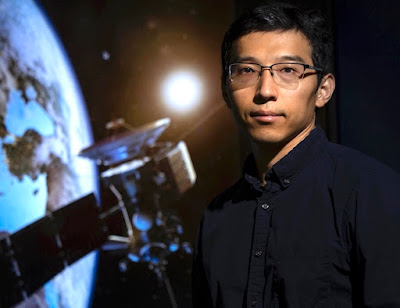Edilawit Mesfine, left, and Edel Seifu, both from Jigjiga University, collect data and larvae from a construction site. (Photo by Kim Awbrey)
Emory University received $2.8 million in funding from the Gates Foundation to support its work to develop and test a high-tech, low-cost method to control an invasive mosquito that poses a growing threat of urban malaria in Africa. The three-year project is focused on three cities in Ethiopia: Jigjiga, Semera and Logiya.
The project’s novel approach to combating malaria combines on-the-ground knowledge of human and mosquito behaviors with detailed environmental imagery from drones and NASA satellites. Machine learning techniques will be applied to the data to develop a model — powered by artificial intelligence — for targeted public health interventions.
The aim is to efficiently control populations of the invasive Anopheles stephensi mosquito by first, identifying water sources that are most likely to harbor the larvae during the dry season. And secondly, by sharing maps of these precise targets with local public health authorities — via a mobile phone app — to guide their larvae-eradication efforts in the most efficient and effective manner.
The strategy is based on research on the ecology of stephensi in Jigjiga led by Gonzalo Vazquez-Prokopec, Emory professor of environmental sciences and co-principal investigator for the grant.
“It sounds counterintuitive to focus mosquito-control efforts on the dry season,” Vazquez-Prokopec says. “Our research, however, shows that the dry season offers a perfect window of opportunity to cost-effectively control these mosquitoes.”
Vazquez-Prokopec is an expert on the disease ecology of pathogens spread by vectors, such as mosquitoes. His research considers environmental factors as well as the interactions of mosquitoes, the pathogens they carry, and people.
Related:





